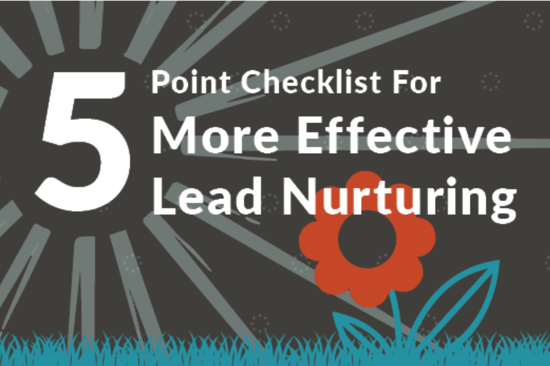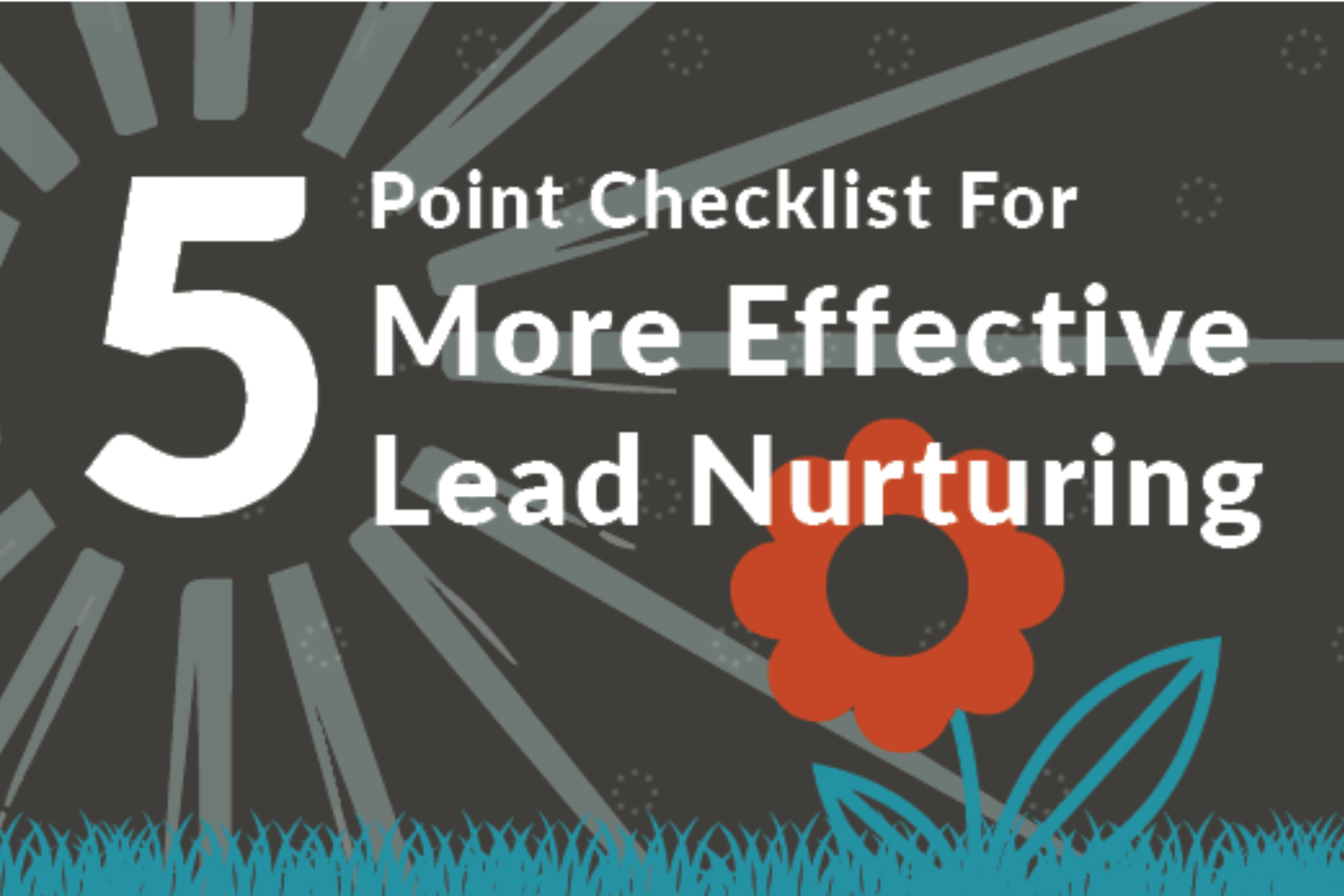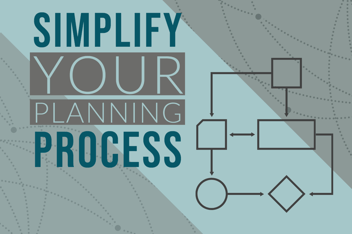How To Improve & Optimize Your Lead Nurturing Strategy (infographic)

Lead nurturing is at the heart of inbound marketing — harnessing the efficiency of automation to generate connections with contacts and leads throughout the sales funnel. (Check out the statistics here: 10 Stats To Back Up Your Lead Nurturing Efforts.)
That automation, through services such as HubSpot, makes it possible for your website to instantly respond and engage with personalized communications whenever a visitor converts on a landing page to access an offer, from a simple blog subscription to a downloading a webinar or template, or a free trial. It allows you to continue to send relevant information and offers, based on the initial interaction on your site, without sending leads straight to the sales department before they have shown specific signs of being ready to engage personally.
But to maximize the effectiveness of your lead nurturing, it needs to be set up to do these 5 things.

Which of these questions can you answer with a confident “Yes!”?
1. Do you use an automated lead nurturing solution such as HubSpot to immediately engage leads?
Everyone expects quick responses to their requests, and automation is the way to provide it, not only in sending the thing requested (such as a link to a downloadable whitepaper), but also in following up with related information and offers in the hours and days that follow.
77 percent of marketers who use automated lead nurturing software convert more leads. (Source: ImbactBND) Why? Because they more efficiently reach out to leads with additional information than if each new lead was funneled into a list for personal contact, possibly getting lost in the shuffle, or only receiving a follow-up email after having received more quick responses from other vendors or service providers.
The emails sent through a specific lead nurturing workflow, in response to a specific trigger, are also more effective than random email blasts that are not linked to an action taken by a lead.
Lead nurturing emails get 4-10 times the response rate of standalone email blasts. (Source: HubSpot)
2. Do your lead nurturing emails provide leads with usable content that fits the lead’s stage in the sales funnel?
Targeting users with content that matches their stage in the sales funnel yields 72 percent higher conversion rates. That means sending a new lead, who has only downloaded one introductory level offer, more awareness level content, but with links to more in-depth content that they might want as they move through the buyer’s journey.
For many businesses, that buyer’s journey will take time and require a number of contacts. In fact, 48 percent of businesses say most of their leads require long cycle nurturing with many influencers.
(Source: Venture Harbour)
This is why we emphasize, over and over, the need to develop full funnel campaigns that can span the breadth and depth of information needed by leads as they move toward a decision. Don’t skip any stage of the funnel when planning marketing content and lead nurturing workflows.
3. Are progressive forms used on landing pages to incrementally build a customer profile that can be passed on to sales?
Use progressive forms on your landing pages in order to gather information about leads through your nurturing platform. Progressive forms prefill certain fields for leads who have already converted on at least one offer on your website, but ask for additional information as they access offers that are farther down the sales funnel. For example, a blog subscription form might ask for nothing more than an email address. When that same lead then downloads a whitepaper, the progressive form would prefill the email address, but ask for name and job title. If that individual returns and converts on an offer for a video comparison of two software options, the form would prefill the information you already have, but then also ask questions about the company name and size, and industry.
Having this information available as a lead is transitioned to sales for a personal contact is one reason nurtured leads produce on average a 20 percent increase in sales opportunities vs. non-nurtured leads. (Source: DemandGen Report)
The combination of lead nurturing and progressive forms means that:
1. A connection is developed between your company and your leads, and leads get the information they need.
2. Your lead nurturing software captures information about lead interaction with your website and what offers leads convert on in order to pinpoint actions that meet lead qualification criteria.
3. When leads are qualified to transition to sales, your progressive forms have fed customer profiles that give the sales team a head start in creation a connection with the lead when they reach out in person.
Those advantages mean that companies that excel at lead nurturing have 9 percent more sales reps making quota. (Source: HubSpot)
4. Have you defined the characteristics and actions that qualify a lead to be passed on to sales?
Did you know that just 56 percent of B2B organizations verify valid business leads before they are passed to sales? Maybe it isn’t surprising when even more — nearly 8 in 10 — B2B marketers have not established lead scoring. (Source: HubSpot)
The danger in missing this step in the process is that your sales department will waste time on non-productive leads rather than being able to focus solely on those leads who are ready, willing and able to make a purchase decision.
Use our guidelines in this Lead Qualification Checklist to develop your own lead scoring criteria and determine the tipping point at which to transition leads from automated lead nurturing to direct contact with sales.
5. Are your lead nurturing workflows reviewed and updated periodically to include new assets and blog posts?
Relevant emails drive 18x more revenue than broadcast emails. (Source: HubSpot)
But keeping your emails relevant means regularly reviewing and updating your lead nurturing workflows. While a workflow put into place 3 years ago may still be sending leads relevant information, it is also linking to older blog posts, videos and downloads, rather than offering leads a look at your most up-to-date information. Take time to review and rewrite the emails in your workflow so that they reflect current information and link to recent content that highlights your newest successes and solutions. (This could be one part of a larger marketing content audit, which is useful in guiding future strategies and campaigns.)
As you create new lead nurturing workflows, or revisit existing workflows to update them, our template will help you keep track of the details of when to send each email, what triggers moving leads from one workflow to another, and the text and links to include in each of the individual emails that make up the complete workflow. You can download it here free: Lead Nurturing Workflow Template. Or schedule a time to talk with us about how to optimize your inbound marketing and lead nurturing. Click here to choose a time that works best for you.
-1.png?width=1652&height=294&name=Jones(RGB)-1.png)









.png?width=352&name=4%20Reasons%20To%20Use%20Lead%20Nurturing%20(And%203%20Free%20Tools%20To%20Get%20You%20Started).png)


